La Schiava Greca (The Greek Slave) : A Masterpiece of Symbolism and Significance
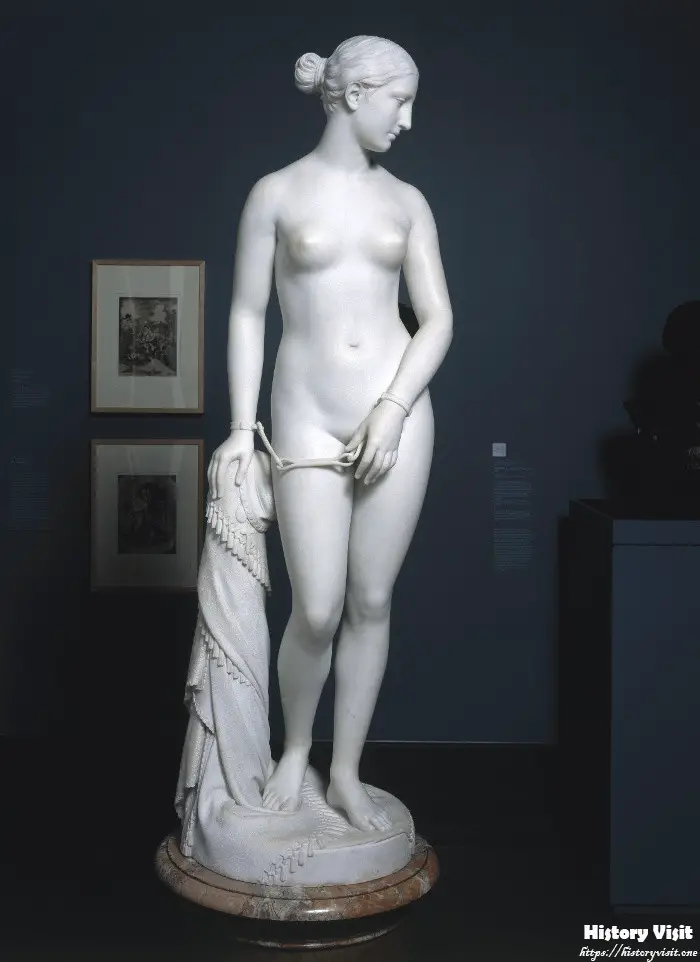
Introduction
“La Schiava Greca,” also known as “The Greek Slave,” is a renowned marble sculpture created by the American artist Hiram Powers in the mid-19th century. This iconic work stands as a powerful symbol of beauty, resilience, and human dignity, capturing the profound impact of the Greek War of Independence and the broader themes of slavery and freedom. As one of the most celebrated sculptures of its time, “La Schiava Greca” played a significant role in shaping public perceptions and artistic expressions during a period marked by social and political upheaval.
The significance of “La Schiava Greca” extends beyond its artistic merits. It is a reflection of the historical context in which it was created, embodying the struggles and aspirations of the Greek people during their fight for independence from the Ottoman Empire. Hiram Powers’ work resonated deeply with contemporary audiences, particularly in Europe and America, where it was seen as a poignant commentary on the universal quest for liberty and justice.
In this article, we will explore the historical context, creation, reception, and lasting legacy of “La Schiava Greca.” By examining the various facets of this masterpiece, we aim to understand its enduring importance in the realm of art and its broader cultural implications.
Historical Context
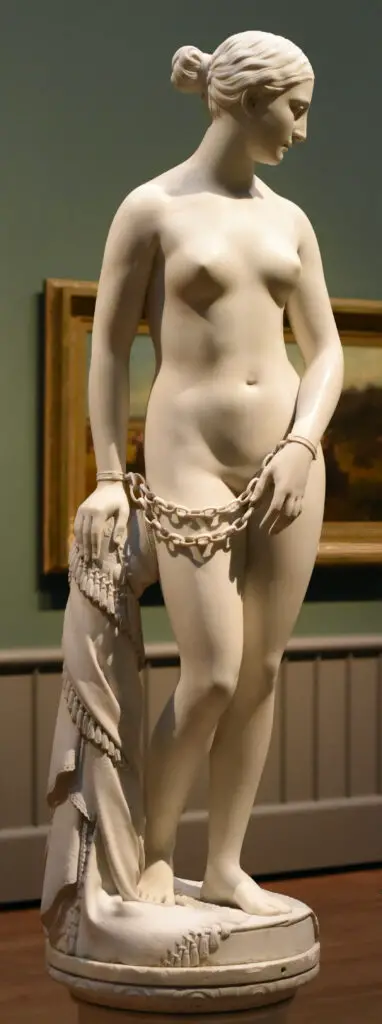
Hiram Powers, an American sculptor born in 1805, rose to prominence in the 19th century with his neoclassical works. The creation of “La Schiava Greca” in 1843 was significantly influenced by the Greek War of Independence (1821-1829), a pivotal event that captured the world’s attention. This conflict saw the Greeks fighting to liberate themselves from centuries of Ottoman rule, a struggle that resonated with the ideals of freedom and self-determination championed during the era.
The plight of the Greek people during their war for independence stirred emotions across Europe and America. Philhellenism, a movement supporting Greek independence, gained momentum, attracting widespread sympathy and support. Powers, inspired by the Greek cause and the broader abolitionist movements of his time, sought to encapsulate these sentiments in his work. “La Schiava Greca” thus emerged as a powerful artistic response to the prevailing social and political currents, serving as a testament to the resilience and strength of those fighting for their freedom.
The historical context of the Greek War of Independence, coupled with the prevailing attitudes toward slavery and human rights, provided a rich backdrop for Powers’ creation. His sculpture became a medium through which he could express his advocacy for liberty and justice, aligning his artistic vision with the moral and ethical concerns of his contemporaries.
Description of the Sculpture
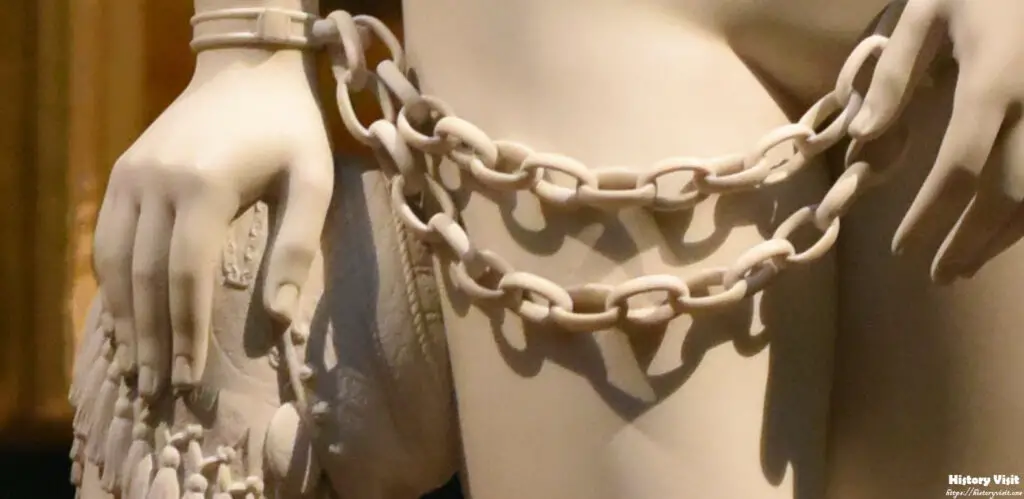
“La Schiava Greca” is a life-sized marble statue depicting a young Greek woman, bound in chains, standing in a poised yet sorrowful stance. The sculpture measures approximately 165 centimeters in height and is meticulously carved to highlight the delicate features and graceful form of the female figure. Her downcast eyes and restrained posture evoke a sense of dignity and quiet strength, despite her evident suffering.
The intricate details of the sculpture, from the flowing drapery that partially covers her body to the finely sculpted chains, reflect Powers’ exceptional craftsmanship. The marble’s smooth finish and the naturalistic rendering of the human form underscore the neoclassical style that Powers mastered. The figure’s serene expression, despite her bondage, serves as a powerful contrast, emphasizing the themes of resilience and hope amidst adversity.
Symbolically, the sculpture represents not only the physical bondage of the Greek woman but also the broader struggle for freedom and human rights. The chains are a direct reference to the oppression faced by the Greeks under Ottoman rule, while her noble bearing suggests an unbroken spirit. This duality of suffering and strength is central to the sculpture’s enduring impact, resonating deeply with audiences who viewed it as a poignant commentary on the universal quest for liberty.
Reception and Impact
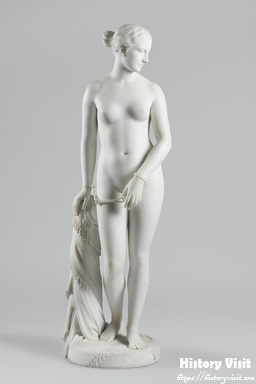
Upon its unveiling, “La Schiava Greca” received widespread acclaim both in Europe and America. The sculpture’s debut at the Great Exhibition of 1851 in London marked a significant moment in Powers’ career, as it captured the admiration of critics and the general public alike. The statue’s poignant portrayal of a Greek slave struck a chord with viewers, who were moved by its powerful message and exquisite craftsmanship.
Contemporary artists and critics praised Powers for his ability to convey profound themes through his art. The sculpture was lauded for its realism and emotional depth, with many commentators highlighting its capacity to evoke empathy and reflection on the issues of slavery and freedom. This positive reception helped to solidify Powers’ reputation as one of the leading sculptors of his time, and “La Schiava Greca” became a celebrated symbol of artistic excellence and social commentary.
The impact of “La Schiava Greca” extended beyond the art world, influencing the broader abolitionist movements of the 19th century. The sculpture was often used as a symbol in anti-slavery campaigns, serving as a visual reminder of the injustices faced by enslaved individuals. Its powerful depiction of human suffering and resilience resonated with activists and the public, contributing to the growing momentum for social and political change.
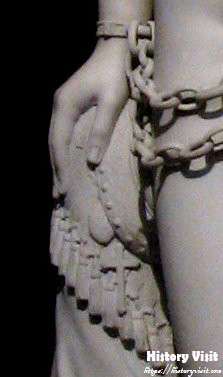
Analysis and Interpretation
The artistic techniques employed by Hiram Powers in “La Schiava Greca” showcase his mastery of neoclassical sculpture. The realistic rendering of the human form, combined with idealized features, creates a sense of timeless beauty and grace. Powers’ attention to detail, from the texture of the marble to the subtle expressions on the figure’s face, demonstrates his skill in capturing both physical and emotional nuances.
The sculpture’s style is characterized by a blend of realism and idealism, reflecting the neoclassical tradition’s emphasis on classical forms and themes. The idealized beauty of the Greek slave, juxtaposed with the harsh reality of her chains, creates a poignant visual contrast that enhances the sculpture’s emotional impact. This interplay between idealism and realism allows viewers to engage with the work on multiple levels, appreciating both its aesthetic qualities and its deeper symbolic meaning.
Culturally and socially, “La Schiava Greca” holds significant relevance. It reflects 19th-century attitudes towards slavery and freedom, serving as a commentary on the moral and ethical issues of the time. The sculpture’s emphasis on human dignity and resilience aligns with contemporary debates on human rights, making it a powerful statement against oppression and injustice. By embodying these themes, “La Schiava Greca” continues to resonate with modern audiences, highlighting the enduring relevance of Powers’ work.
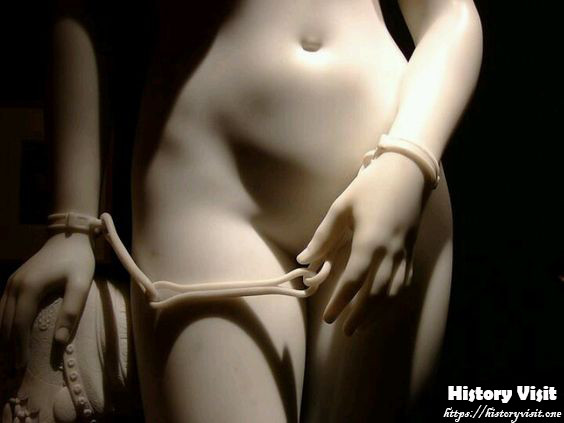
Legacy and Modern Relevance
The legacy of “La Schiava Greca” is preserved through its presence in notable museums and collections around the world. The original sculpture, along with its replicas, is housed in prestigious institutions such as the Smithsonian American Art Museum and the Victoria and Albert Museum. These institutions play a crucial role in preserving and showcasing the sculpture, ensuring that it remains accessible to the public and continues to inspire future generations.
Recent exhibitions and scholarly studies have further cemented the sculpture’s importance in art history. Scholars and art historians have explored its significance within the context of 19th-century art and society, examining its influence on contemporary and subsequent artistic movements. These studies highlight the sculpture’s role in shaping public discourse on issues of slavery, freedom, and human rights, underscoring its impact beyond the realm of art.
In contemporary times, “La Schiava Greca” remains relevant as a symbol of the enduring struggle for liberty and justice. Modern interpretations and debates continue to explore its cultural and social significance, examining its relevance to current discussions on human rights and freedom. By engaging with these themes, the sculpture serves as a reminder of the ongoing fight against oppression and the importance of resilience and dignity in the face of adversity.
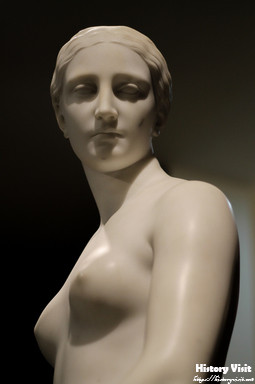
Conclusion
“La Schiava Greca” stands as a testament to Hiram Powers’ artistic genius and his commitment to addressing profound social and political issues through his work. The sculpture’s historical context, creation, and reception highlight its significance as a powerful commentary on the struggles for freedom and human rights. Its enduring impact on art and society underscores the importance of art as a medium for social change and reflection.
As we reflect on the legacy of “La Schiava Greca,” we are reminded of the universal themes of resilience, dignity, and the quest for liberty that continue to resonate across time and cultures. The sculpture’s ability to evoke empathy and inspire action speaks to its lasting relevance, serving as a powerful symbol of the human spirit’s capacity to endure and overcome adversity.
In celebrating “La Schiava Greca,” we honor not only Hiram Powers’ artistic achievements but also the broader values of freedom and justice that his work so eloquently represents. As we continue to engage with this masterpiece, we are called to reflect on our own roles in advancing these ideals and to strive for a more just and compassionate world.


